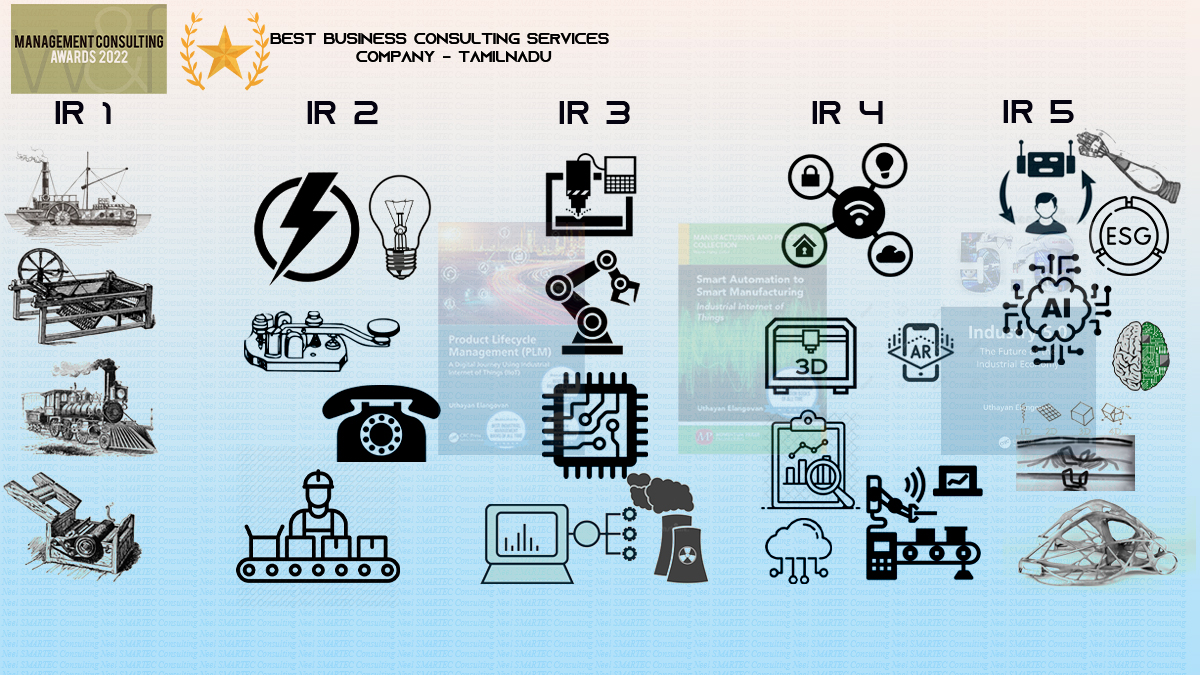
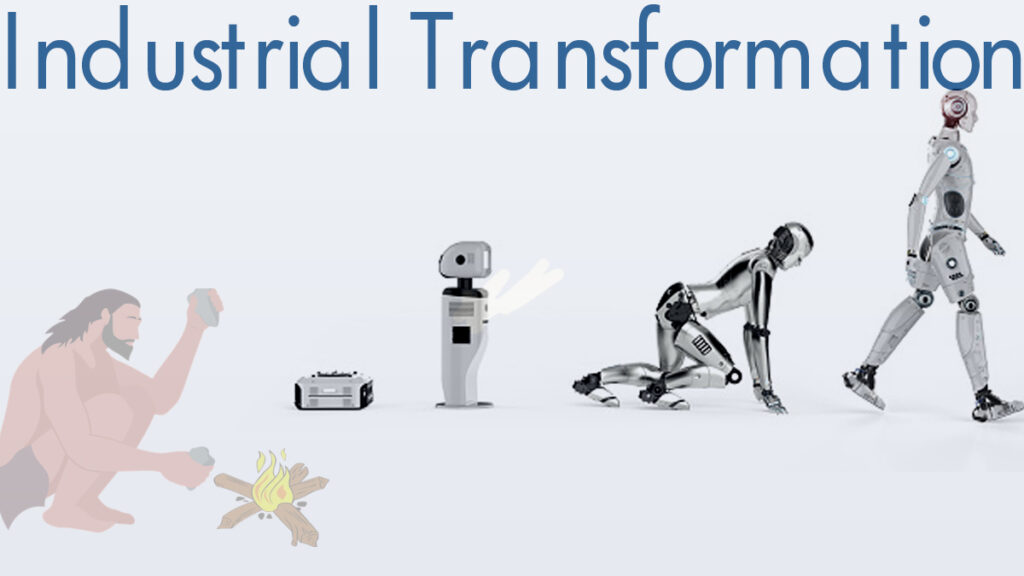
- Introduction:
- Growth of Architectures:
- So, what is Industrialization?
- Industrial Revolution:
- Industry 1.0 (Late 18th to early 19th century):
- Industry 2.0 (Late 19th to early 20th century):
- Industry 3.0 (Late 20th century):
- Industry 4.0 (Present and beyond):
- Transformation from Industry 1.0 to Industry 4.0:
- Final Thoughts:
The big Industrial Transformation behind-the-scenes of human life called the Industrial Transformation changed human life substantially. There a whole lot extra reputable methods of production along with succeeding greater degrees of production set off far-ranging changes to industrialized societies.
Introduction:
Different phases of Industrial transformation made an enormous result in all areas of commercial and business. Innovation of each period could not have the very same sizes and shape as today, however, for their time, it was certainly something for people to take a look at. People would certainly always make use of the modern technology they had readily available to help make their lives easier, besides at the same time attempt to ideal it as well bring it to the next step.
Transformation begins with Stone age, when two rocks utilized for lit capturing fire (energy) or, simply put for great deals of advancement in the human age, which forms the base for developing steam electric motor. Because individuals made a substantial transformation in each area as Architectural, water, Science and Technology, Framework, Medicines, Vehicles and so on.
Growth of Architectures:
An additional important technology is most usually talked is growth of buildings, architectures. Indian architecture is as old as the historical development growth. The soonest remains of apparent framework task in the India returns to the Indus Valley cities. The particular design of shelter growth in various parts was a consequence of topographical, weather, ethnic, racial, recorded along with phonetic diverse options. The Rock-cut structures supply among the most exceptional little old Indian workmanship instance. From 200 BCE to 650 BCE the Buddhist priests proceeded having one of the most punctual Kanheri Caves arranged inside the timberlands of the ‘Sanjay Gandhi National Forest’ in Maharashtra, that were found out of a big basaltic shake projection in the middle of the first as well additionally 2nd centuries B.C. as likewise one of the promptest Ajanta caves going back to the second century BCE.
Dravidian haven format developed in tamilnadu, extremely include havens functioned of sandstone, soapstone or stone. The widely known Brihadeswara place Thanjavur of tamilnadu exhibits this design. The establishment of surrender shelter design was laid by them on the banks of Malaprabha River in Karnataka amidst 500 along with 757 BCE. The Badami Cave places prepared in the community of Badami in north Karnataka going back to the sixth century is simply among the most effective designs of this engineering consist of improving columns, finely etched roof boards and also sculptures. Essentials for all change is the improvement. Requirement is the necessity of all growth that triggers transformation. These technology in industry causes Industrial Transformation.
So, what is Industrialization?
Word Industrialization is originated from the Latin Industria which simply suggests, the stable application to organization of labor. The English language still makes use of words laborious in the sense, of tough working. In French, the meaning has calmly altered the term Industrie describes all operations whereby, resources are refined and products are produced. In German Industrie is booked for handling widespread, with use equipment and also modem approaches of functioning. By all these references, automation indicates, a development in economic history, whereby man’s tasks were routed on brand-new courses and his performance increased by bounds and jumps. This growth is called by historians as the commercial change, very first occurred in specific European countries, during the later component of the 18th century. The modem culture was an end result of the commercial change in England throughout the late 18th and also early 19th centuries.
Both synonymous terms ‘sector’ as well as ‘producing’ are utilized very frequently to signify economic activity. These two terms are expressed in a different way by various geographers. Some interpretations are clarified as listed below: According to New Standard Encyclopedia, the term industry in it wide sense i.e., all effective ventures of a country or area. There are such words as production, farming, trade and business, transport, communication, mining, lumbering, angling, building and construction and also, they are called as markets.
Industrial Revolution:
The Industrial Revolution was an essential change in the means items were generated, from human labor to equipment’s. There a lot more efficient means of manufacturing and also succeeding greater degrees of production triggered significant changes to industrialized cultures. Machines were developed which replaced human labor. New energy resources were established to power the new machinery- water, heavy steam, electrical energy, oil (gas, kerosene). Industrial Revolution is classified based on different technological development of Industrial Transformation across different timeline.
Industry 1.0 (Late 18th to early 19th century):
Also known as the First Industrial Revolution, this period marked the transition from agrarian and handcraft-based economies to mechanized and factory-based production. Steam engines, water power, and the development of textile machinery were key innovations. It led to significant social and economic changes, including urbanization and increased productivity.
Industry 2.0 (Late 19th to early 20th century):
The Second Industrial Revolution was characterized by the introduction of mass production and electrification. Innovations like the assembly line and the use of electric power transformed manufacturing, boosting efficiency and production rates. This era saw advancements in transportation, communication, and the rise of industrial giants.
Industry 3.0 (Late 20th century):
The Third Industrial Revolution, also known as the Digital Automation Transformation, witnessed the rise of semiconductors and automation. Mainframe computers, microprocessors, and the internet paved the way for digitalization, streamlining processes, and enabling global communication. It led to a shift towards knowledge-based economies and the integration of information technology in everyday life.
Industry 4.0 (Present and beyond):
The Fourth Industrial Revolution is the era of cyber-physical systems and interconnected smart technologies. Internet of Things (IoT), artificial intelligence, big data analytics, and automation are key components. Industry 4.0 drives efficiency, customization, and predictive decision-making, transforming manufacturing and other sectors with its intelligent and connected systems.
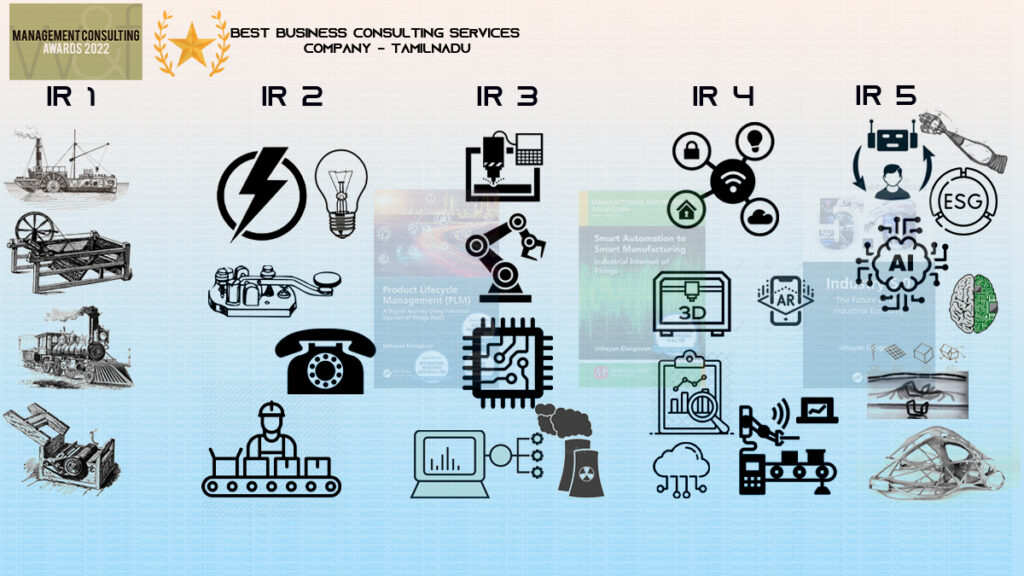
Transformation from Industry 1.0 to Industry 4.0:
Industry 1.0 to Industry 2.0:
The transition from Industry 1.0 to Industry 2.0 was driven by advancements in mechanization and electrification. With the introduction of steam engines and the harnessing of electric power, factories experienced a dramatic increase in productivity. Mass production techniques, such as the assembly line, revolutionized manufacturing, allowing for standardized and faster production.
Industry 2.0 to Industry 3.0:
The shift from Industry 2.0 to Industry 3.0 was characterized by the rise of computer technology and the digital age. Mainframe computers paved the way for smaller, more affordable microprocessors, leading to the democratization of computing power. The internet connected the world, transforming communication and enabling the sharing of information globally. Manufacturing processes became more automated and data-driven, optimizing efficiency and decision-making.
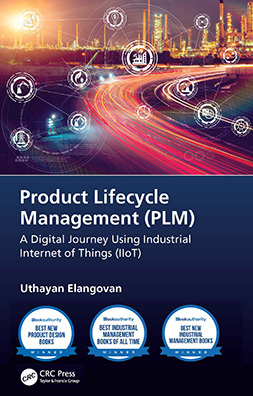
Check PLM with IIOT
Industry 3.0 to Industry 4.0:
The transition from Industry 3.0 to Industry 4.0 was propelled by the convergence of cyber and physical systems. The emergence of the Internet of Things (IoT) connected devices, machines, and systems, generating vast amounts of data. Artificial Intelligence (AI) and machine learning enabled autonomous decision-making, predictive maintenance, and real-time analytics. 3D printing and additive manufacturing revolutionized production processes, allowing for rapid prototyping and customization.
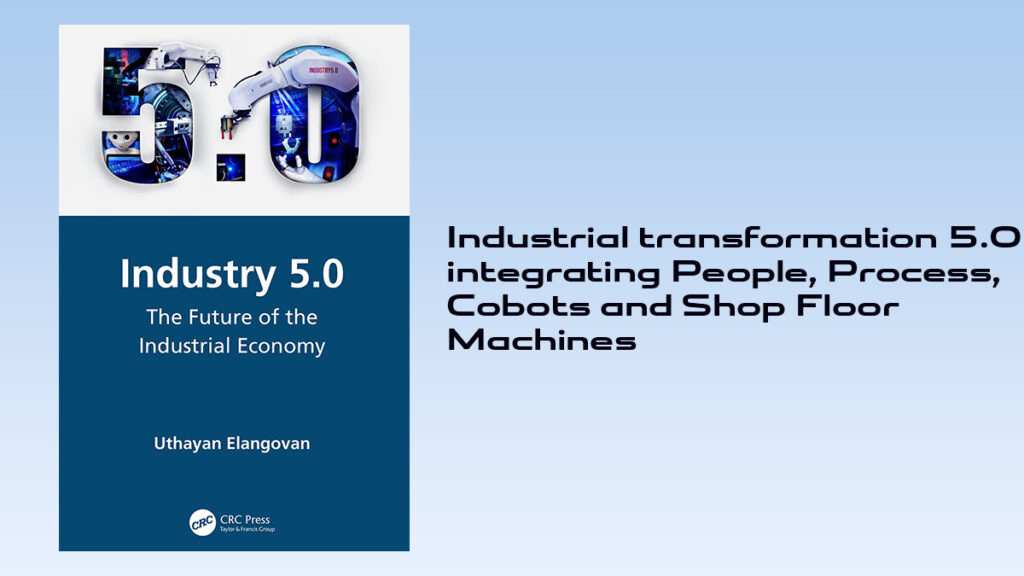
Checkout Industry 5.0
Final Thoughts:
Inventors put advances in atomic, solar, and wind power at the later stages of the Industrial Change. Enhanced use of minerals and also metals – Lightweight aluminum, coal, copper, iron, etc. Transportation improved, Steam-powered central heating boilers, Trains, Cars. Interaction enhanced – Telegraph, Telephone, and also Radio. Example of this Industrial Transformation is the personal computer or cellular phone. Cell phones were originally utilized by experts who needed quick interactions for service. The everyday efficiency of cell phones was rapidly noticeable, boosting demand. Mobile phone towers were constructed around the world, and also mobile phone technology remains to grow even more facility. Have pupils contrast the initial block sized cell phone to the apple iPhone.

